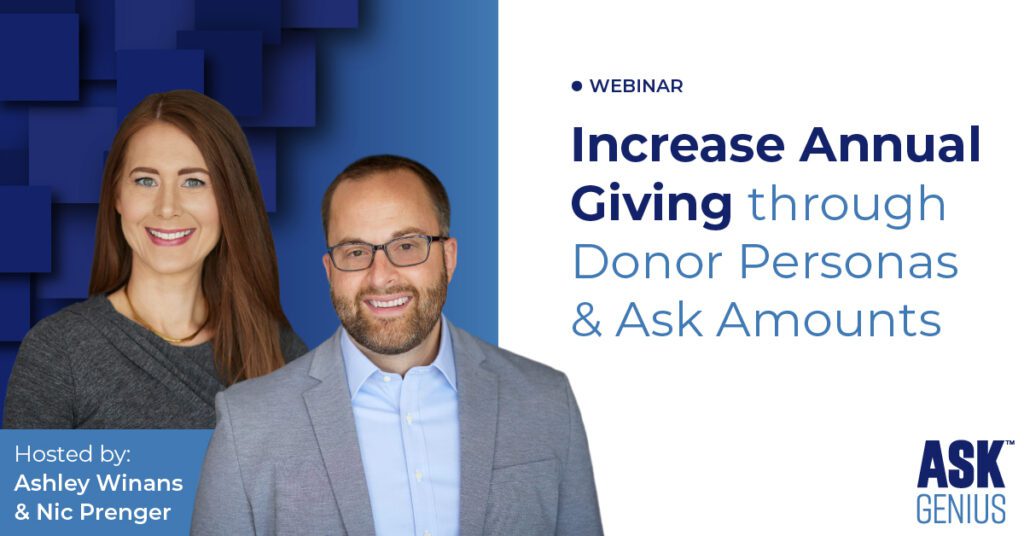Seasoned fundraisers know that nonprofit organizations must have a thoughtful process for screening donors and creating donor segments. Nonprofits cannot use the same approach for all potential donors.
A wealth screening process and prospect research tool can help fundraisers plan their time strategically. It can help create various approaches for individual donor segments.
A major donor or high-net-worth prospect will require a different communication strategy than an existing loyal donor who routinely gives through the annual direct mail appeal.
While fundraisers know that conducting wealth screening can help achieve fundraising goals, they may not know which data points to start with or which wealth screening software to use. Wealth screening tools may seem unattainable due to cost or the learning curve of using a new tool, but many are more cost-effective than staff may realize.
Some small nonprofits may not have major gift officers who will use wealth screening as part of a fundraising campaign. For some nonprofits, wealth screening software may not be necessary, but donor data can still assist in setting personalized donation amounts for direct mail appeals.
Begin by determining if wealth screening is the proper process for your nonprofit organization to try this year. The right donor data can help build strong relationships and elevate fundraising efforts.
Defining Wealth Screening
According to Charity Navigator, “Wealth screening is research that determines a donor’s giving capacity by examining indicators like real estate holdings, stock information, past charitable giving, and other records.” While not all donors have stock holdings or own real estate, many data points can assist fundraising efforts.
Accurate donor data is crucial to a successful wealth screening or prospect research screening. Make sure database clean-up is also a routine part of fundraising efforts at your nonprofit.
Nonprofits can use wealth screening in many ways, such as during capital campaigns or when determining donation amounts during direct mail appeals. This data can also help determine donor segments.
Donor segmentation can be used throughout a fundraising strategic plan. The initial donor group to segment for planning purposes is major donors. These are the individuals who have made significant contributions.
Another group consists of those who donated last year but have not this year. We refer to them as LYBUNTs. Additionally, there are first-time donors who have recently made their first contribution. Lastly, there are year-end donors who consistently contribute at the end of every year.
Wealth screening can help identify prospects in each of these groups to whom your fundraising staff should pay particular attention due to their giving capacity.
Using Donor Data Points in Direct Mail
Some nonprofits find wealth screening overwhelming, but with the right tools, wealth screening can help improve fundraising efforts. One way to utilize wealth screening information is to determine donation amounts in mail appeals.
People say fundraising is an art with a bit of science mixed in. The science of setting ask strings boils down to using historical giving data with a dash of wealth screening information to set a customized ask string for every donor.
Andrew Menke, Vice President at AskGenius, notes, “Wealth research can be a powerful tool for setting ask amounts, but only when used in combination with the donor’s existing giving history and the donor’s connection to the organization.”
The most important data when setting ask amounts is the level of engagement the donor has already shown to your organization. Then, based on that existing level of engagement, you can use wealth research to increase your ask amounts where appropriate.”
This approach highlights the importance of starting with what you know about each donor’s past engagement before considering their broader financial capacity.
Setting customized gift amounts can seem too time-consuming and overwhelming to do by hand. Many nonprofits ask everyone in their donor base for the same $50, $100, or $250 amount on the pledge card.
Fundraising tools exist to help with this personalization process. Use a tool like AskGenius to set individual ask strings; this software uses a research-based algorithm to take the headaches out of direct mail pledge cards.
Other Ways to Begin Using Wealth Screening
Wealth screening can help segment donors for your communication strategy. If, during the screening, you learn an existing donor has stock holdings, you may let them know that your nonprofit accepts stock gifts.
Or you may determine that you want to communicate about matching gifts, donor-advised funds, or endowment gifts to high-capacity donors.
Wealth screening can help shape the next steps for fundraising as you plan strategically for the year ahead. Donor data can help determine how to keep donors best informed about the giving vehicles that are right for them.
High net-worth individuals may need different information than those who give through peer-to-peer fundraising. Your team might consider calling top prospects to arrange a face-to-face meeting about potential gifts.
Donor data helps plan communication opportunities for every donor segment.
For More Insights on Fundraising Tools
Learn more about using the AskGenius tool to customize ask strings for donors by scheduling a demo now. For more fundraising insights, sign up for the AskGenius monthly newsletter.
Don’t forget that wealth screening is only the start of tailoring your fundraising plan for different donor groups. Use wealth screening to gain insights beyond contact information and donation history.
Get insights delivered right to your inbox and begin raising more money for your important mission.
This post has been updated and was originally published on July 12, 2021.
